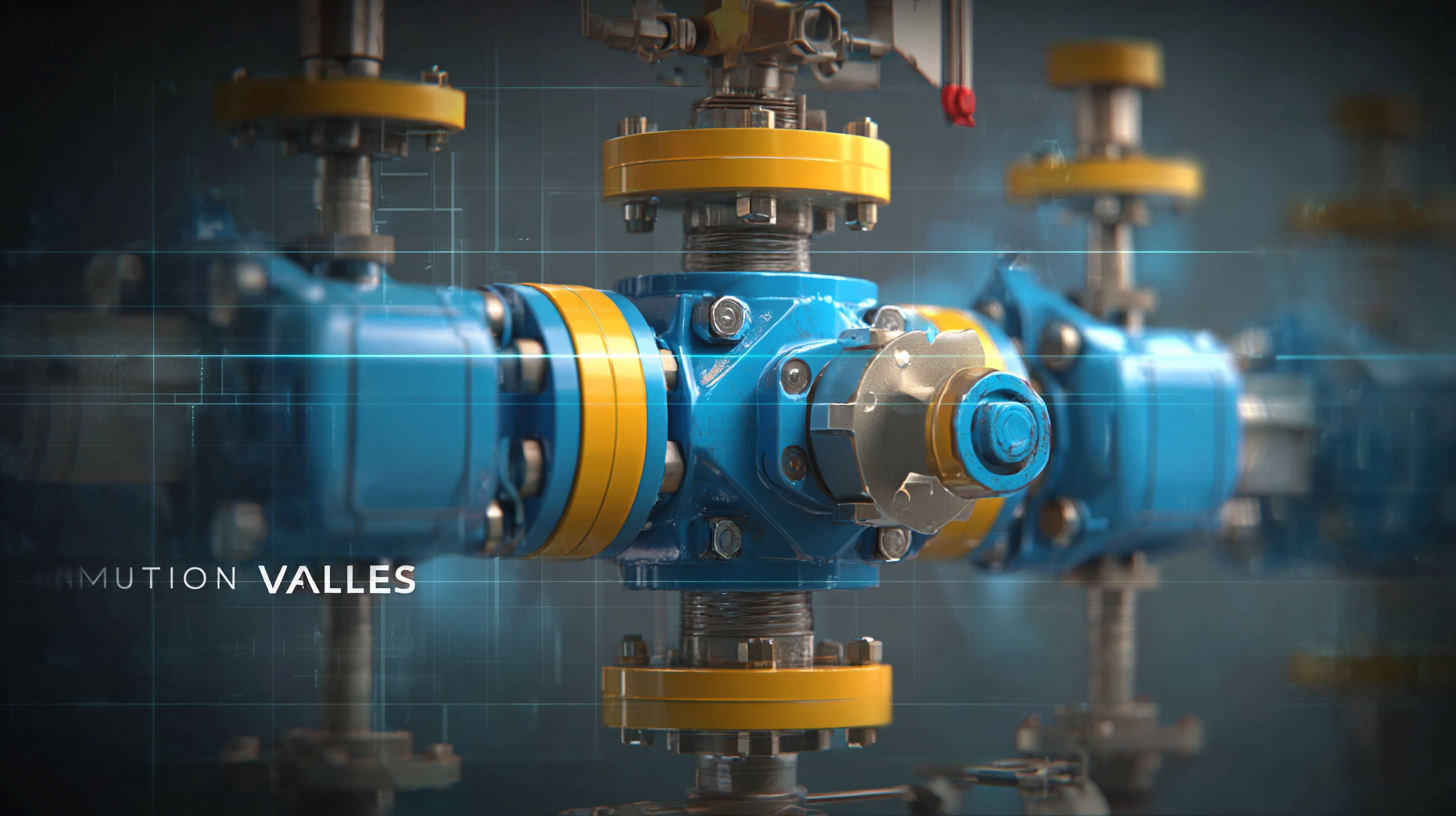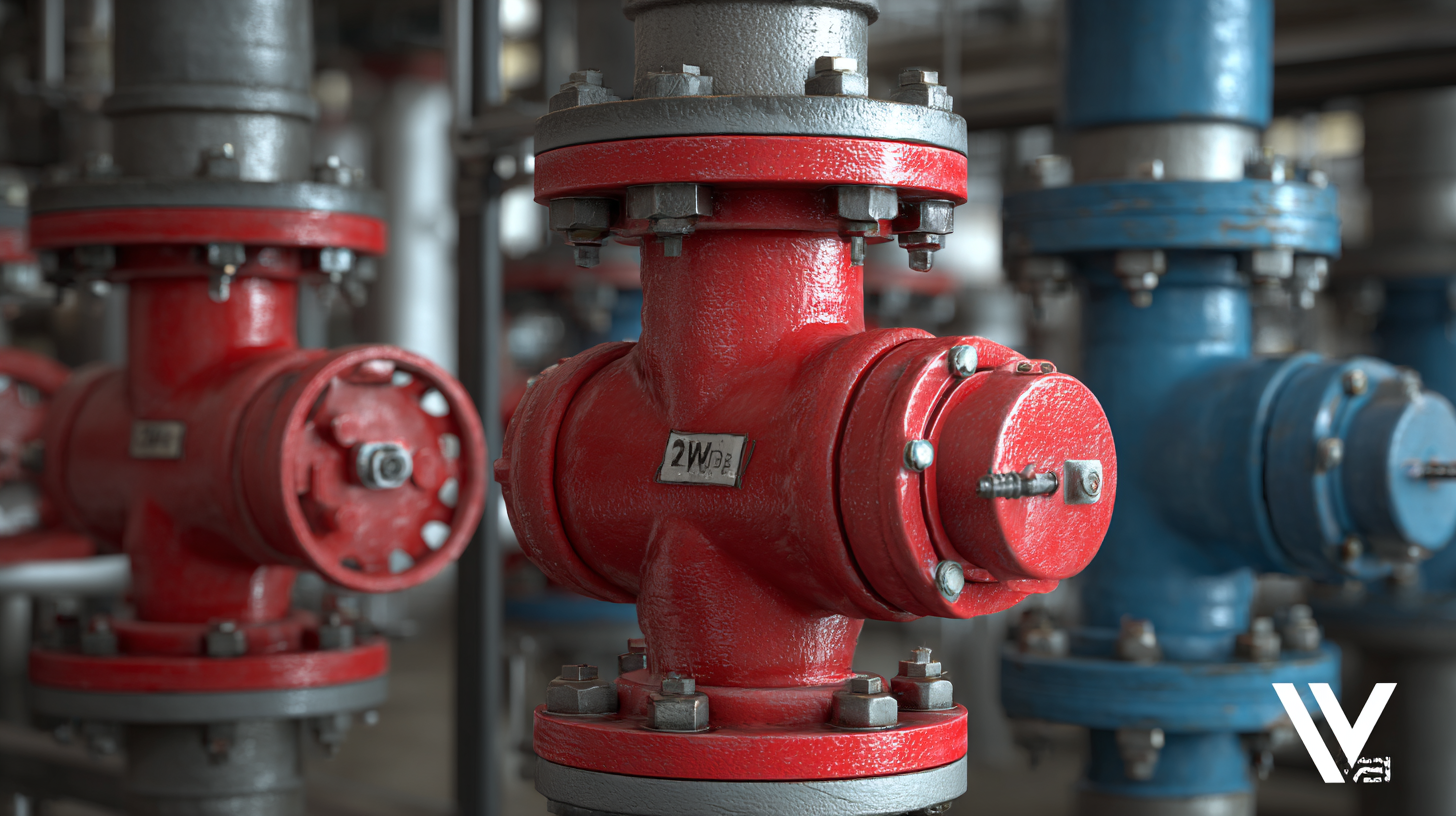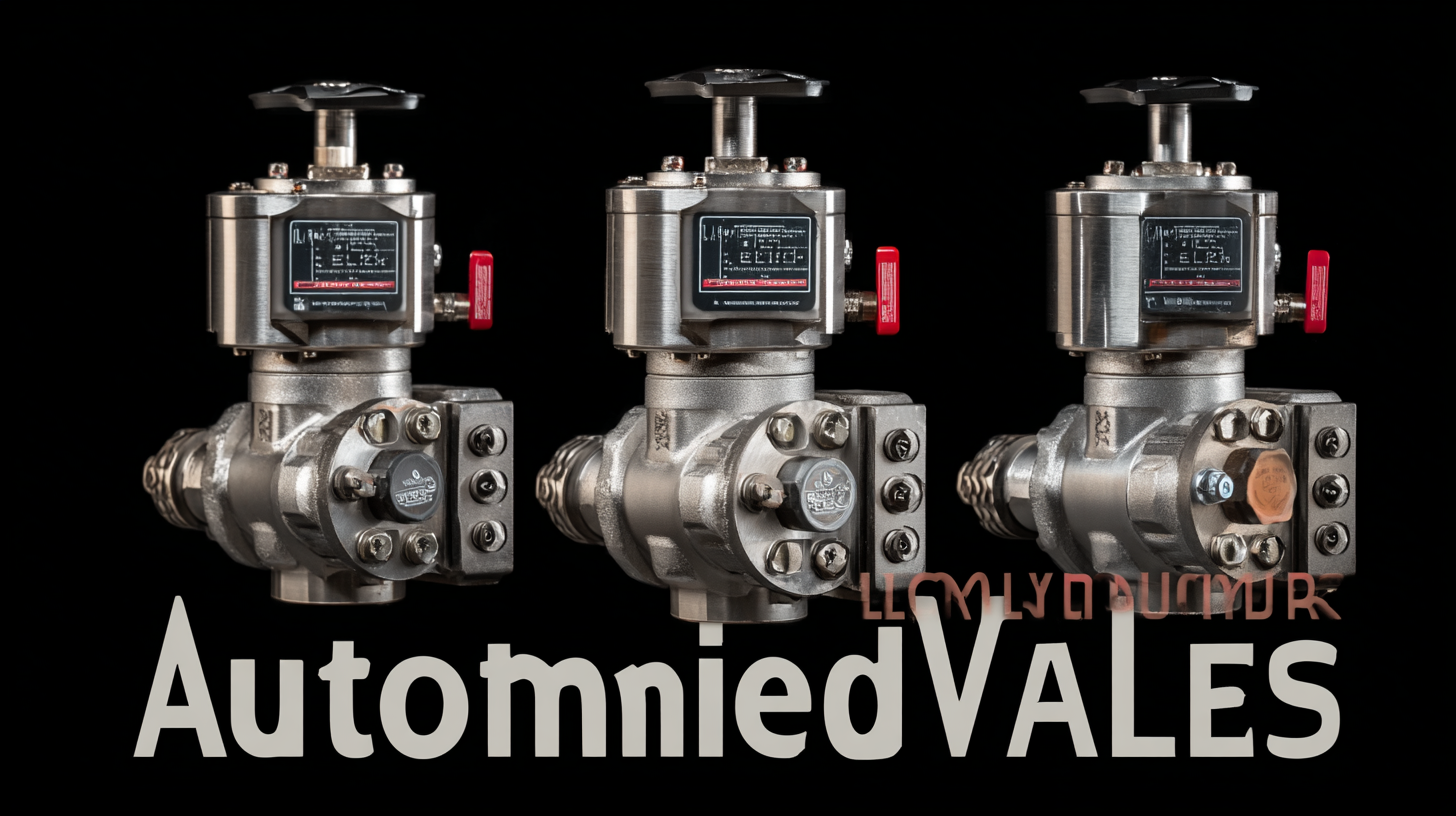Exploring Key Characteristics of Automated Valves and How to Choose the Right One for Your Industry
In modern industrial applications, the use of Automated Valves has become increasingly vital, driven by the need for efficiency and precision in fluid control systems. According to a recent report by MarketsandMarkets, the automated valve market is projected to grow from USD 10.6 billion in 2021 to USD 15.4 billion by 2026, at a compound annual growth rate (CAGR) of 7.6%. This surge underscores the critical role these devices play in various sectors, including oil and gas, water treatment, and food processing. As industries strive for automation to improve operational efficiency and reduce human error, understanding the key characteristics of Automated Valves and learning how to select the right one for specific applications are paramount. This ultimate guide will explore these attributes in detail, providing valuable insights for professionals seeking to enhance their operations through effective valve solutions.

Key Applications of Automated Valves Across Various Industries
Automated valves play a crucial role in various industrial applications, ensuring efficient operation and enhanced safety across numerous sectors. In oil and gas, for instance, these valves are essential for controlling the flow of hydrocarbons, enabling precise management of pressure and preventing leaks. The ability to automate valve operations helps streamline processes, reduce labor costs, and enhance the reliability of systems in this high-stakes environment.
In the water treatment and distribution industry, automated valves are instrumental in regulating water flow, managing pressure, and maintaining system integrity. They enable quick responses to changes in demand or system failures, thus ensuring a steady supply of clean water. Furthermore, in the pharmaceutical and food processing sectors, automated valves are vital for maintaining sanitary conditions and ensuring product quality, as they minimize human error and contamination risks.
When it comes to selecting the right automated valve for a specific industry, considerations such as pressure ratings, materials compatibility, and automation technologies are paramount. Understanding the specific requirements of each application will guide industry professionals in choosing valves that not only meet operational needs but also enhance overall system performance.
Common Issues Faced When Implementing Different Types of Automated Valves
When implementing automated valves across various industries, several common issues can arise, which can significantly impact operational efficiency. One primary concern is compatibility with existing systems. According to a recent market report by Research and Markets, over 30% of facilities encounter integration challenges when introducing automated valves due to varying control techniques and communication protocols. This can lead to downtime and increased maintenance costs as engineers work to align old and new technologies.
Another frequent issue is reliability and performance under diverse operating conditions. The American Society of Mechanical Engineers (ASME) notes that automated valves, especially in high-pressure environments, can fail if not appropriately selected. In fact, studies show that nearly 25% of valve failures are attributed to incorrect pressure ratings or inadequate material selections. As industries continue to expand and adapt, ensuring the right specifications are met is essential for optimal valve performance and minimized disruptions to service. Adopting a robust selection process and considering environmental factors can mitigate these challenges effectively.

Evaluating Performance: What to Look for in Automated Valves
When evaluating automated valves for industrial applications, performance is paramount. The key attributes to consider include response time, actuation type, and control precision. Response time refers to how quickly the valve reacts to command signals; faster response times are particularly critical in industries where fluid dynamics can change rapidly, such as oil and gas or chemical processing. Additionally, the actuation type—whether electric, pneumatic, or hydraulic—can greatly influence performance based on the specific requirements of your operations. For instance, electric actuators offer high precision and less maintenance compared to their pneumatic counterparts, which are better suited for applications requiring quick movements.
Another vital aspect is the control precision of the valve, which directly affects the overall efficiency of the system. Look for features like position feedback and smart control options that enable fine-tuning of flow rates and system responses. The compatibility of the valve with existing systems and the ease of integration should also be taken into account, as this will impact operational efficiency and downtime during installation. By focusing on these performance indicators, industries can make informed decisions that enhance productivity and ensure reliable operation.
Performance Evaluation of Automated Valves Across Different Industries
Comparative Analysis: Electric, Pneumatic, and Hydraulic Valve Types
When considering automated valves for industrial applications, understanding the characteristics of electric, pneumatic, and hydraulic valve types is essential. Electric valves are known for their precision and easy integration with digital control systems. They offer excellent performance for applications requiring accurate flow control and can be operated remotely, making them ideal for processes where automation is key. Their low maintenance requirements and straightforward installation add to their appeal, although they may be limited by environmental factors like high temperatures and humidity.

Pneumatic valves, on the other hand, are celebrated for their rapid response times and robust performance in high-demand environments. Utilizing compressed air, these valves excel in situations where quick actuation is critical. Their durability makes them suitable for harsh conditions, but they require a consistent air supply, which can be a limiting factor in certain setups.
Hydraulics provide unmatched power and force, making hydraulic valves a favorite for heavy machinery and applications demanding high torque. They can manage larger flows and pressures than their electric and pneumatic counterparts but typically involve more complex installations and maintenance.
Choosing the right type ultimately hinges on the specific needs of the application, including actuation speed, control precision, and environmental considerations. By weighing the pros and cons of each valve type, industries can make informed decisions that optimize their operational efficiency.
Guidelines for Selecting the Most Suitable Automated Valve for Your Needs
When it comes to selecting the most suitable automated valve for your industry, several key factors must be considered to ensure optimal performance and efficiency. First, you should evaluate the specific requirements of your application, including the type of fluid being handled, temperature, pressure, and flow rate. Understanding these parameters will help you determine the appropriate valve material, size, and design. For example, corrosive fluids may require valves made of more resistant materials like stainless steel, while high-temperature applications might need specialized seals to prevent leakage.
Another critical aspect in choosing the right automated valve is the actuation method. Options typically include electric, pneumatic, and hydraulic actuators, each offering distinct advantages depending on your operational needs. If rapid opening and closing are essential, a pneumatic actuator may be the best choice, while electric actuators could be ideal for applications requiring precise control. Additionally, consider the level of integration with existing systems, such as compatibility with control systems and feedback mechanisms. By thoroughly assessing these elements, you can select an automated valve that enhances your system's reliability and efficiency while meeting your industry standards.
Exploring Key Characteristics of Automated Valves and How to Choose the Right One for Your Industry - Guidelines for Selecting the Most Suitable Automated Valve for Your Needs
| Type of Automated Valve | Key Characteristics | Best Suited For | Control Method | Common Applications |
|---|---|---|---|---|
| Ball Valve | Quick opening and closing, low flow resistance | Water treatment, oil & gas | Electric or pneumatic | Fluid control, gas distribution |
| Gate Valve | Full opening, minimal pressure drop when fully open | Water supply, sewage treatment | Electric, hydraulic, or manual | On/off control, pipeline isolation |
| Globe Valve | Good throttling capabilities, higher pressure drop | Heating systems, cooling systems | Electric or pneumatic | Flow regulation, throttling |
| Check Valve | Prevents backflow, automatic operation | Pipelines, HVAC systems | N/A (self-operating) | Backflow prevention, safety applications |
| Butterfly Valve | Compact design, quick operation | Chemical processing, HVAC | Electric or pneumatic | Flow isolation, control |
